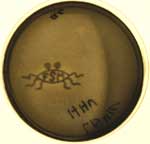Captures nano details
Captures nano details

the latest research in the nascent field of synthetic biology has thrown up a method to take photographs using bacterial film, which can detect nano-metre (one-billionth of a metre) features and print ultra-detailed images.
A group of student researchers from the University of California at San Francisco in the us used a layer of billions of genetically engineered Escherichia coli as the film. The microbes were grown in dishes of agar, which is a gelatinous product used as a base to culture bacteria.
The team, led by Anselm Levskaya, extracted a light-sensing protein from a blue-green algae and attached it to the surface of E coli so that the bacteria would respond to light in the same way as the algae does. The method is described in Nature (Vol 438, No 7068, November 24, 2005).
The bacteria are akin to pixels on a computer screen that switch between white and black







